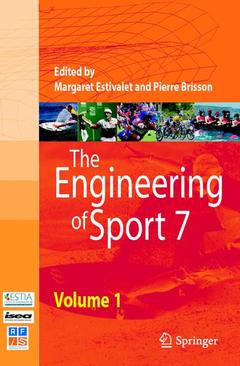Description
The Engineering of Sport 7, 1st ed. 2008. 2nd printing 2009
Vol. 1
Coordinators: Estivalet Margaret, Brisson Pierre
Language: English
Subjects for The Engineering of Sport 7:
Keywords
Software; Technologie; design; development; dynamics; environment; mathematics; mechanics; model; optimization; quality; science; simulation; sports; technology
716 p. · 15.5x23.5 cm · Paperback
Out of Print
Description
/li>Contents
/li>Comment
/li>
This proceedings volume of the ISEA 2008 examines sports engineering, an interdisciplinary subject which encompasses and integrates not only sports science and classical engineering but also aims to bridge the gap between the analysis of the equipment and the athlete himself. The areas of interest include the mechanics, biomechanics and dynamics of sport, the physiology, anatomy and the analysis of movement, instrumentation, equipment design, surface interaction, materials and modelling, and many others. These various topics could be part of technology applications practically in every sport. The proceedings will be of particular interest among others to Engineering, Physics, Mathematics and Sports Science Departments and will act as a forum where research, industry and the sports sector can exchange state of the art technology, dedicated knowledge and innovative ideas.
- This book presents recent findings in the field of sport engineering
- It gathers more than 160 full contributions
- It supports an innovative and interdisciplinary approach linking engineering and physiology
- It seeks to reinforce the dialog between academic and industrial researches

